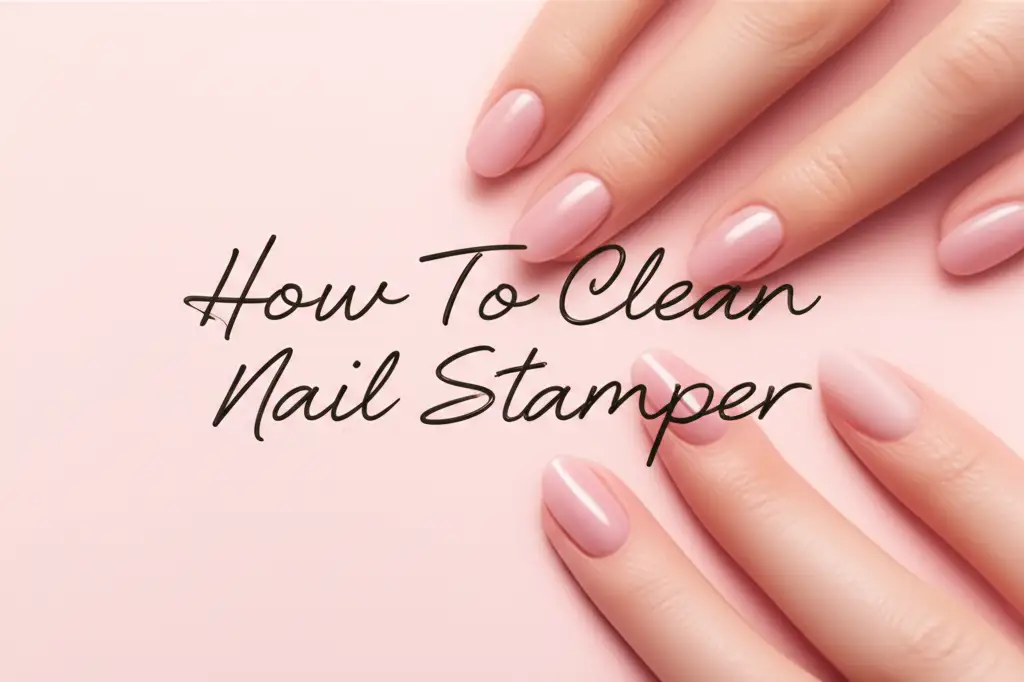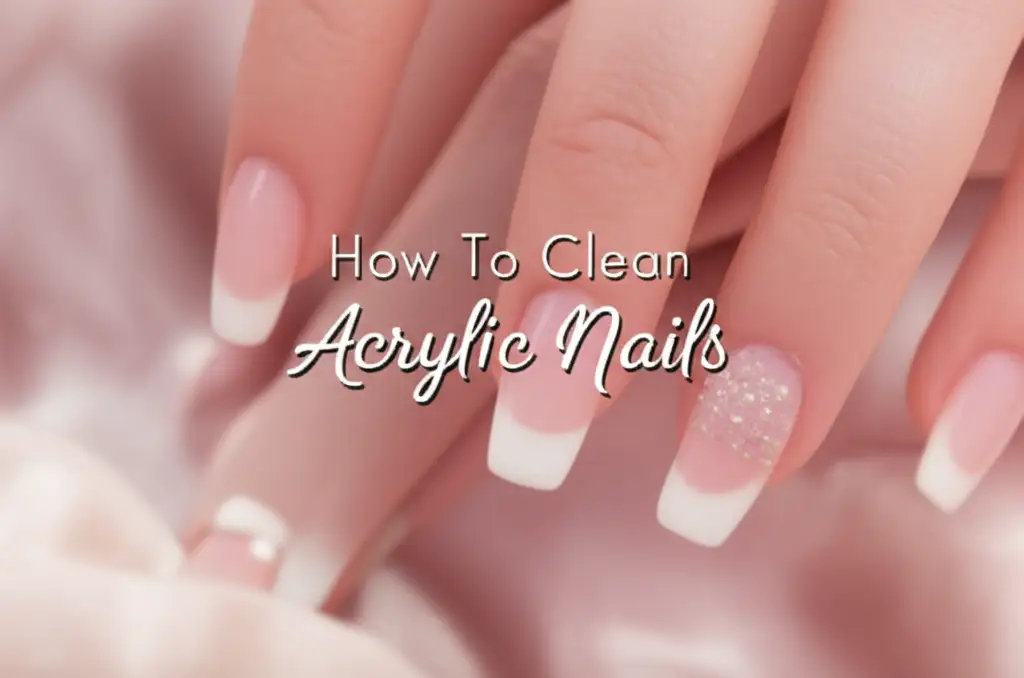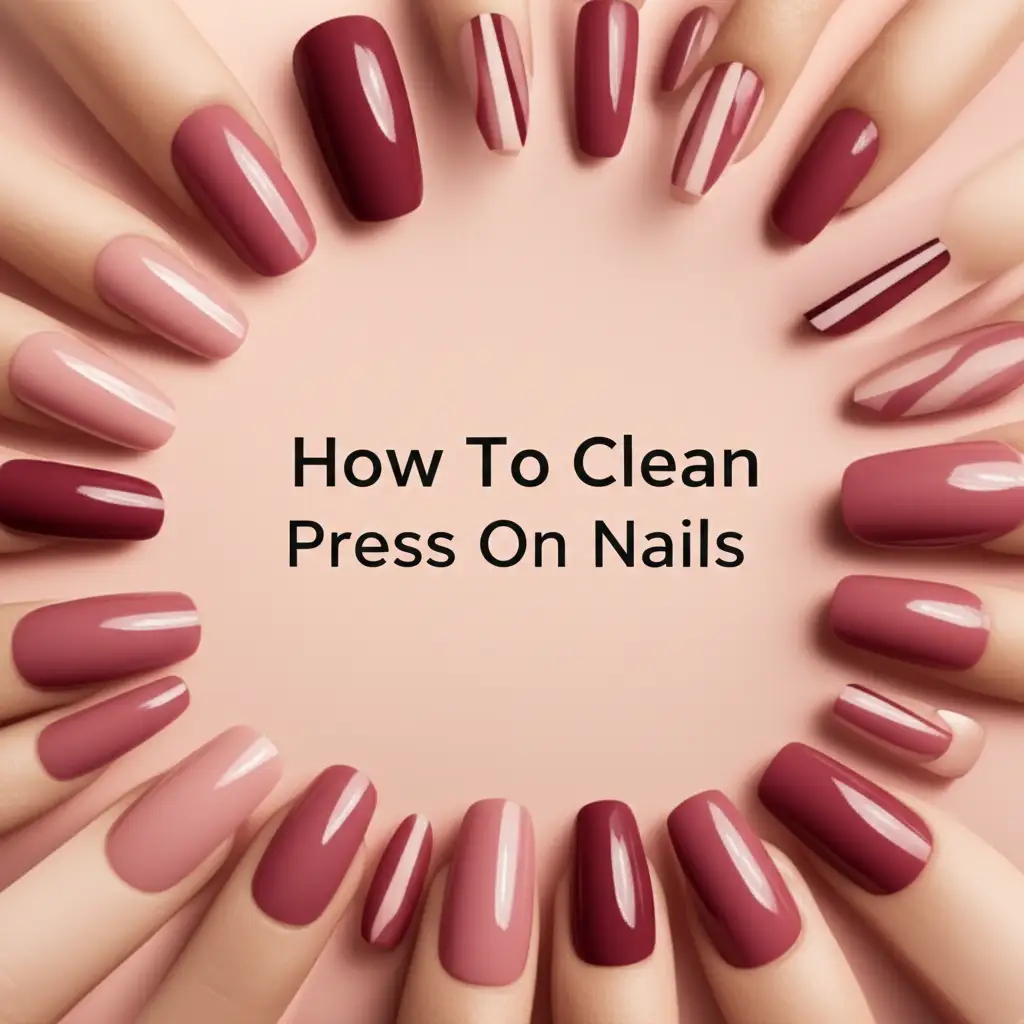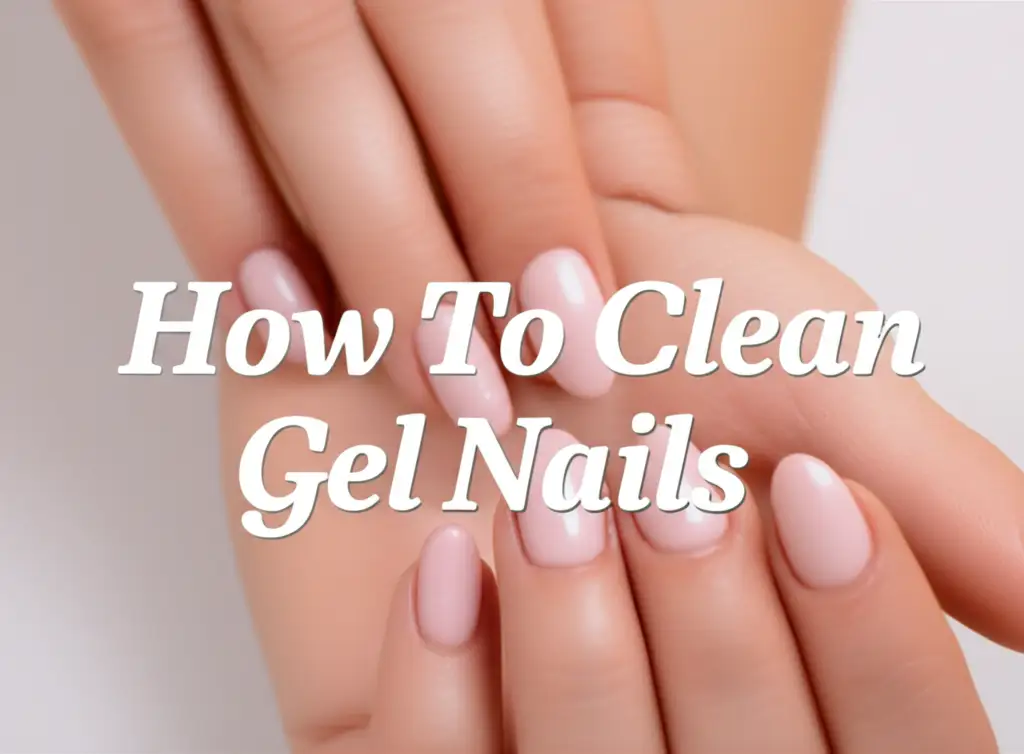· Personal Cleaning Tips · 17 min read
How To Clean Nails With Toothpaste
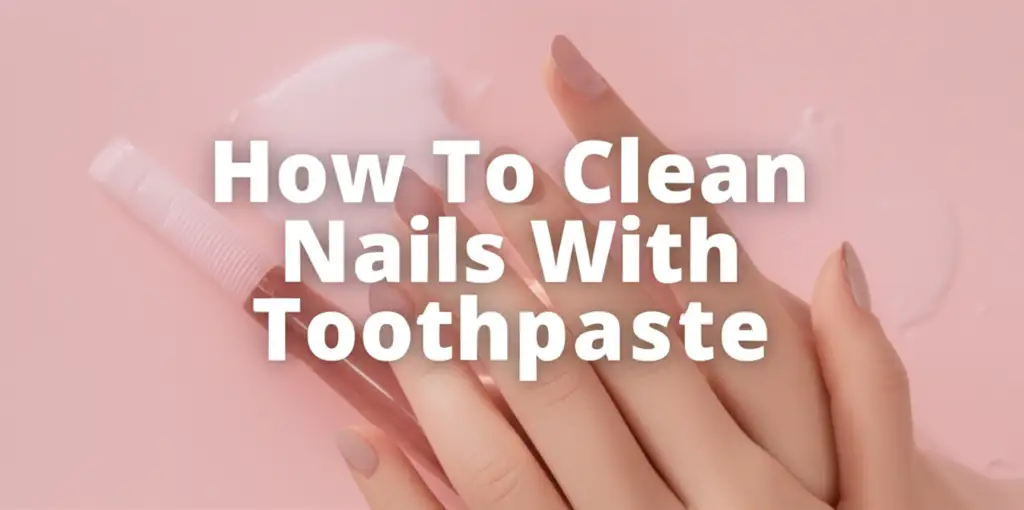
Unlock Bright Nails: How To Clean Nails With Toothpaste
Have you ever looked at your nails and wished they were a little brighter? Maybe you have stubborn dirt under your fingernails or a slight yellow tint you want to remove. It is a common desire for many people. Achieving clean, healthy-looking nails does not always require expensive salon treatments.
I have found a surprisingly effective, simple solution hidden in plain sight: toothpaste. Yes, the same product you use for your teeth can do wonders for your nails. This article will explain exactly how to clean nails with toothpaste. I will guide you through the process, discuss the science behind this method, and share tips for maintaining healthy, clean nails. You will discover a new, easy way to keep your nails looking their best.
Takeaway
- Toothpaste effectively cleans and brightens nails using mild abrasives and detergents.
- Choose a basic white toothpaste without gel, dyes, or whitening crystals for best results.
- Brush nails gently with a small amount of toothpaste and a soft brush for a few minutes.
- Rinse thoroughly and moisturize to prevent dryness.
- Use this method sparingly, typically once or twice a week, to avoid potential nail damage.
How To Clean Nails With Toothpaste
You can clean nails with toothpaste by gently scrubbing them with a small amount of paste and a soft brush. The mild abrasives and cleaning agents in toothpaste help remove dirt, stains, and discoloration from the nail surface. This process leaves nails looking brighter and cleaner.
The Science Behind Toothpaste’s Cleaning Power
Toothpaste is a daily essential for oral hygiene. It does more than just freshen your breath. Its cleaning ability comes from a unique blend of ingredients. These ingredients work together to scrub away plaque and food particles from your teeth.
When applied to nails, these same properties can address dirt and discoloration. Understanding how toothpaste cleans helps you use it effectively on your nails. It is not magic; it is simple chemistry at work.
Understanding Abrasives in Toothpaste
Most toothpastes contain mild abrasive agents. These include ingredients like hydrated silica, calcium carbonate, or dicalcium phosphate. These tiny particles provide a gentle scrubbing action. They help lift away surface stains and trapped dirt.
Think of it like a very fine sandpaper. It smooths the surface and removes debris without causing significant damage. For nails, this means scrubbing away the dull outer layer. This reveals the brighter nail underneath. This gentle abrasion is key to getting rid of yellowing or grimy buildup.
The Role of Detergents and Humectants
Beyond abrasives, toothpaste also contains detergents. Sodium lauryl sulfate (SLS) is a common one. These detergents create foam. The foam helps lift and suspend dirt and oil. This allows for easier rinsing.
Additionally, humectants like glycerin or sorbitol keep the toothpaste moist. They also help prevent the nails from drying out excessively during the cleaning process. These components ensure a thorough clean. They also help maintain some moisture in the nail plate. The combined action of these ingredients makes toothpaste surprisingly effective for various cleaning tasks, not just teeth. For example, some people even use it to clean sterling silver with toothpaste or clean gold jewelry with toothpaste. The principles of gentle abrasion and detergent action are similar across these applications.
Step-by-Step Guide: Cleaning Your Nails with Toothpaste
Cleaning your nails with toothpaste is a simple process. You only need a few common household items. I find this method quick and easy to incorporate into my self-care routine. It is a gentle yet effective way to refresh your nails.
Follow these steps for the best results. You will be amazed at the difference it can make.
Gather Your Supplies
Before you begin, collect everything you need. This will make the process smooth and efficient. You do not want to stop in the middle to search for an item.
Here is a list of what you will need:
- Toothpaste: Choose a basic white paste toothpaste. Avoid gel toothpastes, colored pastes, or those with whitening crystals. These can be too harsh or leave residue.
- Soft-bristled toothbrush or nail brush: An old toothbrush works perfectly. A dedicated nail brush is also a great option. Make sure the bristles are soft to prevent scratching your nails or cuticles.
- Small bowl of warm water: This will be for rinsing and softening your nails.
- Towel: For drying your hands and nails.
- Moisturizer or cuticle oil: Essential for rehydrating your nails and cuticles after cleaning.
The Application Process
Once you have your supplies ready, you can start the cleaning process. I like to do this over a sink to contain any mess. This helps keep my bathroom tidy.
- Prepare your nails: First, remove any old nail polish. Wash your hands thoroughly with soap and water to remove surface dirt and oils. You can soak your fingertips in the bowl of warm water for 2-3 minutes. This helps soften the nails and cuticles.
- Apply toothpaste: Squeeze a pea-sized amount of toothpaste onto your soft-bristled toothbrush or directly onto one fingernail. A little goes a long way. You do not need a lot of paste to get the job done.
- Gently scrub: Hold the brush and gently scrub the surface of your nail. Pay extra attention to the tips, under the nail, and around the cuticles. Use small, circular motions. Do not scrub too hard; gentle pressure is enough. Continue scrubbing each nail for about 30 seconds to 1 minute.
- Rinse thoroughly: After scrubbing all your nails, rinse your hands completely under warm running water. Ensure all toothpaste residue is gone. Any leftover paste can dry on your nails and make them look dull.
- Dry and moisturize: Pat your hands and nails dry with a clean towel. Immediately apply a good quality hand cream or cuticle oil. This step is important to rehydrate your nails and cuticles. It prevents them from becoming dry or brittle.
Following these steps will help you achieve cleaner, brighter nails. I have seen great improvements in my own nails using this simple technique. You can also explore how to care for other nail types, such as learning how to clean press on nails for extended use.
Choosing the Right Toothpaste for Nail Cleaning
Not all toothpastes are created equal when it comes to cleaning nails. The variety of toothpastes on the market can be overwhelming. Some formulations are specifically designed for whitening teeth, while others target sensitivity or gum health. I have learned through experience that the type of toothpaste you choose matters greatly for nail care.
Selecting the wrong kind could potentially harm your nails or offer no benefit. It is important to know what ingredients to look for and what to avoid. This ensures you get the best and safest cleaning results for your nails.
Opt for Basic White Toothpaste
When picking a toothpaste for your nails, always go for a basic, plain white paste. Think of the classic white toothpaste from your childhood. These types usually contain the necessary mild abrasives and detergents without extra components. They are generally gentler.
I recommend avoiding anything with special features. This includes colored gels, glitter, or large whitening crystals. These additives can be too harsh for your nails or leave behind unwanted residue. Simple is always better in this case.
Ingredients to Avoid
Some toothpaste ingredients are great for teeth but not suitable for nails. I always check the ingredient list before using a new toothpaste on my nails. This prevents any unwanted surprises.
Here are some ingredients you should avoid:
- Colored gels or dyes: These can stain your nails or the skin around them. They offer no cleaning benefit.
- Large abrasive particles or whitening crystals: While good for teeth, these can be too harsh. They may scratch or thin your nail plate. This can lead to weaker nails over time.
- Strong bleaching agents: Some whitening toothpastes contain peroxides or other strong bleaches. These can dry out your nails. They can also irritate your cuticles.
- Charcoal toothpaste: While popular for teeth whitening, charcoal can be very abrasive. It can also leave black residue on and under your nails, making them look dirtier.
By being mindful of the toothpaste type, you ensure a safe and effective cleaning experience. This approach applies to cleaning other delicate items too. For instance, when people clean a diamond ring with toothpaste, they must also be careful with the type of toothpaste and its abrasiveness.
Addressing Specific Nail Concerns: Stains and Discoloration
Nails can become discolored for various reasons. Smoking, dark nail polish, dyes from food, or even certain medical conditions can cause yellowing or staining. It is a common problem that can make nails look unhealthy or unkempt. Many people seek simple solutions to restore their nails’ natural color.
Toothpaste offers a promising, accessible method to tackle these common concerns. I have personally found it helpful for removing stubborn stains. It helps bring back a brighter, healthier appearance to my nails.
Tackling Yellow Nails
Yellowing is one of the most frequent nail discolorations. It can be caused by continuous use of dark nail polish without a base coat. It can also result from environmental factors. The mild abrasive action of toothpaste can help buff away this surface yellowing.
The gentle scrubbing helps remove the topmost layer of stained nail cells. This reveals the fresher, lighter nail underneath. For best results with yellow nails, be consistent. Using the toothpaste method once or twice a week can gradually reduce the yellow tint. You will see your nails slowly return to their natural, healthier shade.
Removing Stubborn Stains
Beyond general yellowing, nails can pick up specific, stubborn stains. Think about gardening without gloves, working with strong dyes, or even handling certain foods like turmeric. These can leave dark or colorful marks on your nails. Toothpaste can be surprisingly effective against these kinds of stains.
The combination of the abrasive particles and the cleaning agents in the toothpaste works to break down and lift the stain particles. For particularly tough stains, you might need to apply a little more toothpaste and scrub for a slightly longer duration. Remember to be gentle. A focused scrub on the stained area can make a noticeable difference. Toothpaste is a gentle alternative that can help lift these marks. It helps restore your nails’ clean look.
Tips for Maintaining Healthy, Clean Nails
Cleaning your nails with toothpaste is a great step. However, it is just one part of a comprehensive nail care routine. To truly maintain healthy, clean nails, you need consistent habits. These habits go beyond just cleaning. They involve protecting your nails, keeping them hydrated, and practicing good hygiene.
I have found that a holistic approach yields the best results. It ensures your nails not only look clean but also remain strong and healthy in the long run. Incorporating these tips into your routine will make a significant difference.
Regular Nail Care Practices
Consistent care is vital for healthy nails. Just like your teeth, nails need ongoing attention. Simple daily and weekly habits can prevent many common nail problems.
Here are some practices I recommend:
- Keep them trimmed: Regularly trim your nails to a manageable length. Shorter nails are less likely to break or trap dirt. Use sharp nail clippers for a clean cut.
- File gently: File your nails in one direction to prevent splitting. This also smooths rough edges.
- Push back cuticles, do not cut: Cuticles protect your nail bed from bacteria. Gently push them back after showering with an orange stick. Never cut them, as this can lead to infections.
- Clean under nails daily: Use a nail brush or a soft tool to clean gently under your nails. Do this during your regular hand washing. This prevents dirt buildup.
- Wear gloves for chores: When doing dishes, gardening, or using cleaning products, wear gloves. This protects your nails from harsh chemicals and excessive moisture. This also applies when you want to make sure your press-on nails last longer.
Hydration and Nutrition
Nails, like skin, need moisture to stay strong and flexible. They also reflect your overall health. What you put into your body impacts your nails.
Consider these points for hydration and nutrition:
- Moisturize regularly: Apply hand cream or cuticle oil several times a day. This keeps your nails and surrounding skin hydrated. Hydrated nails are less prone to breaking and peeling.
- Stay hydrated: Drink plenty of water throughout the day. General body hydration directly affects nail health.
- Eat a balanced diet: Include foods rich in biotin, protein, and essential vitamins (A, C, E). These nutrients support nail growth and strength. Examples include eggs, nuts, leafy greens, and lean meats.
- Limit nail polish removers: Acetone-based removers can be very drying. Use them sparingly. Opt for acetone-free removers when possible.
By combining regular cleaning with these comprehensive care practices, you will foster truly healthy and beautiful nails.
Potential Risks and Precautions When Using Toothpaste on Nails
While toothpaste can be an effective tool for cleaning and brightening nails, it is not without its considerations. Like any home remedy, it is important to understand the potential downsides. Using toothpaste incorrectly or too often can lead to unwanted effects. I always advise caution and moderation.
Being aware of these risks helps you use the method safely. You can maximize benefits while minimizing any harm to your nails and surrounding skin. Your nails are delicate, and protecting them is key.
Over-Abrasion and Nail Thinning
The abrasive particles in toothpaste are helpful for scrubbing away stains. However, excessive or vigorous scrubbing can be harmful. Over-abrasion can lead to thinning of the nail plate. Nails can become weak, brittle, and prone to breaking or peeling. This defeats the purpose of trying to improve their appearance.
I recommend using a very soft brush and gentle pressure. Limit the duration of scrubbing to a minute or less per nail. If your nails feel sensitive or appear thinner after use, reduce the frequency. It is also important to consider the type of toothpaste. Avoid harsh, gritty formulations. This caution also applies when cleaning metal items. For example, when you clean an iron plate with toothpaste, gentle scrubbing is also key to prevent scratches.
Dryness and Irritation
Toothpaste contains detergents and sometimes other strong cleaning agents. While these help lift dirt, they can strip natural oils from your nails and cuticles. This can lead to dryness. Dry nails can become brittle. Dry cuticles can crack, leading to pain or even infection.
To counteract this, always moisturize immediately after using toothpaste on your nails. Apply a good hand cream or cuticle oil. If you notice any redness, itching, or excessive dryness around your cuticles, stop using toothpaste on your nails. Consider using the method less often or trying a milder toothpaste. Pay attention to your body’s signals. They tell you if a product is working well for you.
Comparing Toothpaste to Other Nail Cleaning Methods
When it comes to keeping nails clean and healthy, toothpaste is just one option among many. People use various methods, from simple soap and water to specialized nail products. Understanding how toothpaste compares to these other methods can help you decide if it is the right choice for your nail care routine. I have explored several approaches over time, and each has its pros and cons.
The best method often depends on your specific needs, the type of stains, and your personal preferences. It is about finding what works most effectively and safely for you.
Toothpaste vs. Soap and Water
Soap and water are the most basic and common cleaning agents. They are excellent for everyday dirt and grime. Soap’s surfactants lift oil and dirt, which water then rinses away. This method is gentle and suitable for daily use.
Toothpaste, however, offers an added advantage. Its mild abrasive action helps remove more stubborn surface stains and discoloration that soap alone cannot. While soap and water are great for general hygiene, toothpaste provides a deeper, more targeted clean for brightening and stain removal. I use soap and water daily, but turn to toothpaste when I need a little extra polish.
Toothpaste vs. Lemon Juice/Baking Soda
Natural remedies like lemon juice and baking soda are also popular for nail whitening. Lemon juice contains citric acid, a natural bleaching agent. Baking soda is a mild abrasive and helps neutralize odors. Both are effective for some stains. You can even combine them, similar to how you might clean with vinegar and baking soda for other household tasks.
Compared to toothpaste, lemon juice can be very drying and acidic. It may weaken nails if used too often. Baking soda is effective, but it can also be abrasive. Toothpaste often offers a more balanced approach. It combines mild abrasion with moisturizing agents and detergents. This makes it a gentler, all-in-one solution for many. Toothpaste also tends to be less messy than a DIY lemon juice and baking soda paste.
Toothpaste vs. Commercial Nail Whiteners
Commercial nail whiteners are specifically formulated products designed to brighten nails. They often contain chemical bleaches or optical brighteners. These products can be very effective for quick results.
However, they can also be expensive and sometimes contain harsh chemicals. These chemicals can irritate sensitive skin or weaken nails with prolonged use. Toothpaste presents a more natural and cost-effective alternative. It offers a milder approach to whitening and cleaning. While not as potent as some commercial products, it is a gentler option that many prefer for regular use. For me, the simplicity and accessibility of toothpaste make it a valuable tool in my nail care arsenal.
Frequently Asked Questions
Is it safe to clean nails with toothpaste regularly?
Cleaning nails with toothpaste is generally safe, but moderation is key. Using it once or twice a week is usually fine for most people. Overuse can lead to dryness or thinning of the nail plate due to the abrasive ingredients. Always moisturize your nails and cuticles after cleaning to prevent dryness.
What kind of toothpaste works best for cleaning nails?
For cleaning nails, a basic white paste toothpaste is most effective. Avoid gel toothpastes, colored pastes, or those containing large whitening crystals or charcoal. These can be too harsh, stain your nails, or leave unwanted residue. Simple formulations with mild abrasives and detergents are ideal.
Can toothpaste remove all types of nail stains?
Toothpaste is good at removing surface stains and discoloration from nails, especially those caused by dark nail polish or general dirt. However, deep stains or those caused by fungal infections may not respond to toothpaste. For persistent or severe discoloration, consult a doctor or dermatologist.
How long should I scrub my nails with toothpaste?
Scrub your nails gently with toothpaste for about 30 seconds to 1 minute per nail. Use a soft-bristled toothbrush or a nail brush. Avoid aggressive scrubbing, as this can damage the nail surface or irritate the cuticles. Gentle, consistent pressure is sufficient for effective cleaning.
Will toothpaste make my nails grow faster or stronger?
Toothpaste primarily cleans and brightens the nail surface; it does not directly impact nail growth or strength. Healthy nail growth is influenced by proper nutrition, hydration, and overall nail care practices. While cleaner nails might appear healthier, toothpaste alone won’t make them grow faster or become stronger.
Can toothpaste help with nail fungus?
No, toothpaste does not cure nail fungus. Nail fungus requires specific antifungal treatments, often prescribed by a doctor. While toothpaste might temporarily improve the appearance of the nail surface by removing some debris, it does not address the underlying fungal infection. Consult a healthcare professional for fungal issues.
Conclusion
Cleaning your nails with toothpaste offers a surprisingly effective and accessible method for achieving brighter, healthier-looking nails. We have explored the simple science behind toothpaste’s cleaning power, using its mild abrasives and detergents to lift away dirt and surface stains. I have shown you the straightforward, step-by-step process, from gathering your basic supplies to the crucial final step of moisturizing.
Remember, selecting the right kind of toothpaste – a simple white paste – is vital for safety and effectiveness. While toothpaste excels at tackling common concerns like yellowing and stubborn stains, I also emphasized the importance of a holistic nail care routine. This includes consistent cleaning practices, good hydration, and proper nutrition. I encourage you to try this simple trick to elevate your nail care game. Embrace the power of your everyday toothpaste for a cleaner, brighter manicure right at home. Your nails will thank you for it!
- toothpaste for nails
- nail hygiene
- DIY nail care
- clean under nails
- nail whitening

